Total Eclipses Are Cosmic Horror
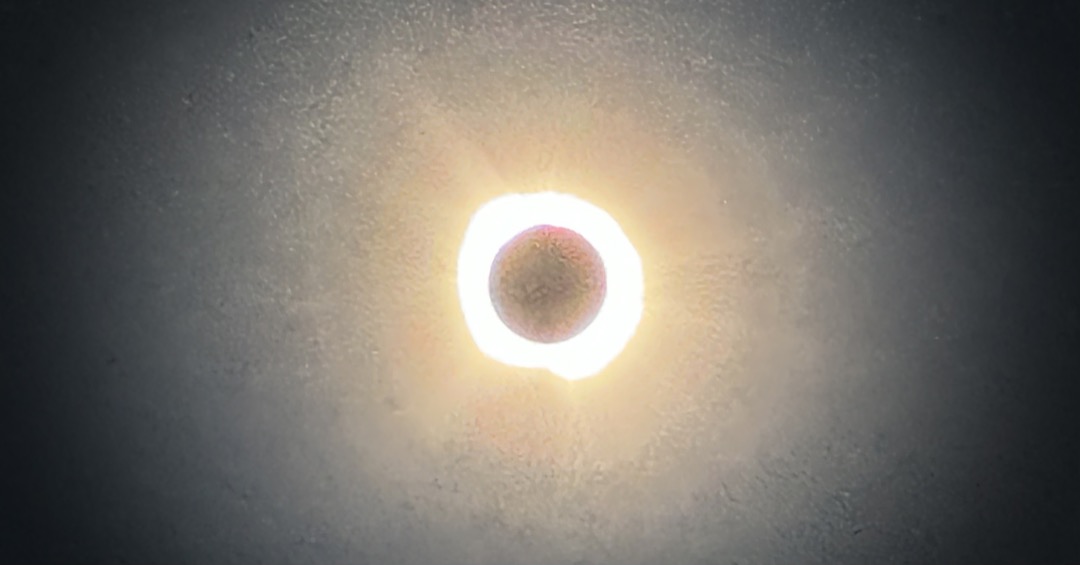
People kept saying that a total eclipse is a totally different experience from a partial one. I didn’t understand why.
I’d heard it from Randall Munroe of xkcd fame as far back as 2017. He reiterated the message this year. But the one that stuck most in my mind was a quote from this article by Anne Dillard (emphasis mine):
I had seen a partial eclipse in 1970. A partial eclipse is very interesting. It bears almost no relation to a total eclipse. Seeing a partial eclipse bears the same relation to seeing a total eclipse as kissing a man does to marrying him, or as flying in an airplane does to falling out of an airplane. Although the one experience precedes the other, it in no way prepares you for it.
I’d seen partial eclipses a few times in my life. The earliest was back in the 90s in Portugal, the latest in California in 2017. They were neat. With some eclipse glasses, you could see something taking a bite out of the sun, and the world got a tiny bit dimmer.
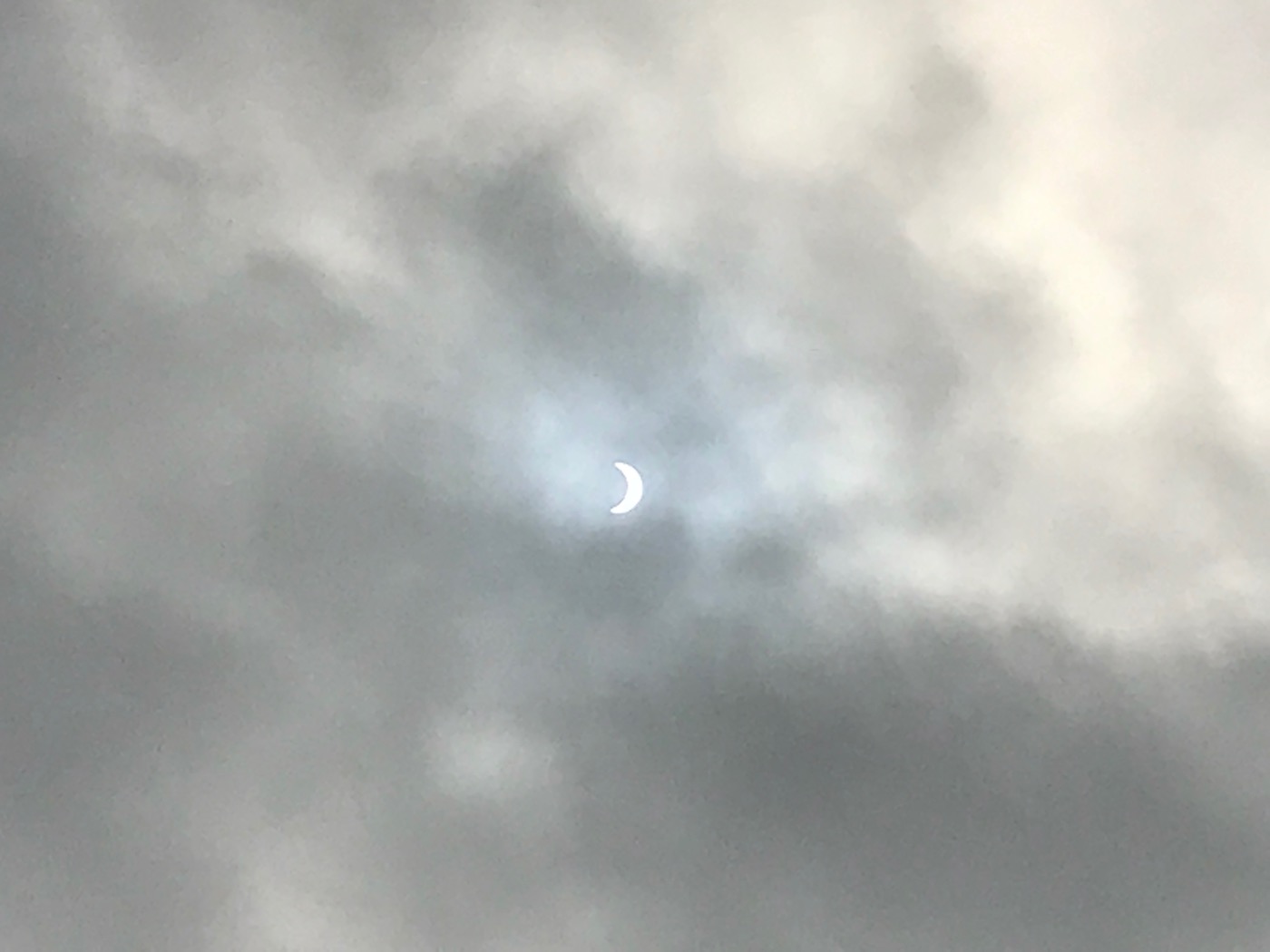
It was pretty cloudy back in 2017.
But this idea—that there was something different about total eclipses that I was missing—stuck in my brain in the years since then. So I made plans to see this year’s eclipse from inside the path of totality, ultimately ending up at a parking lot of a suburban mall in the Dallas area for the main event.
And now that I’ve seen it, I have to tell you: they were right. A total eclipse can only be described as otherworldly.
Let me try to explain why.
Partiality
The initial stages of a solar eclipse were no different than the partial ones I’d seen. The air got a little cooler, my surroundings got a bit dimmer, as if it were late in the afternoon despite the sun being high in the sky. This is where you can take out your glasses and see the sun become a crescent.
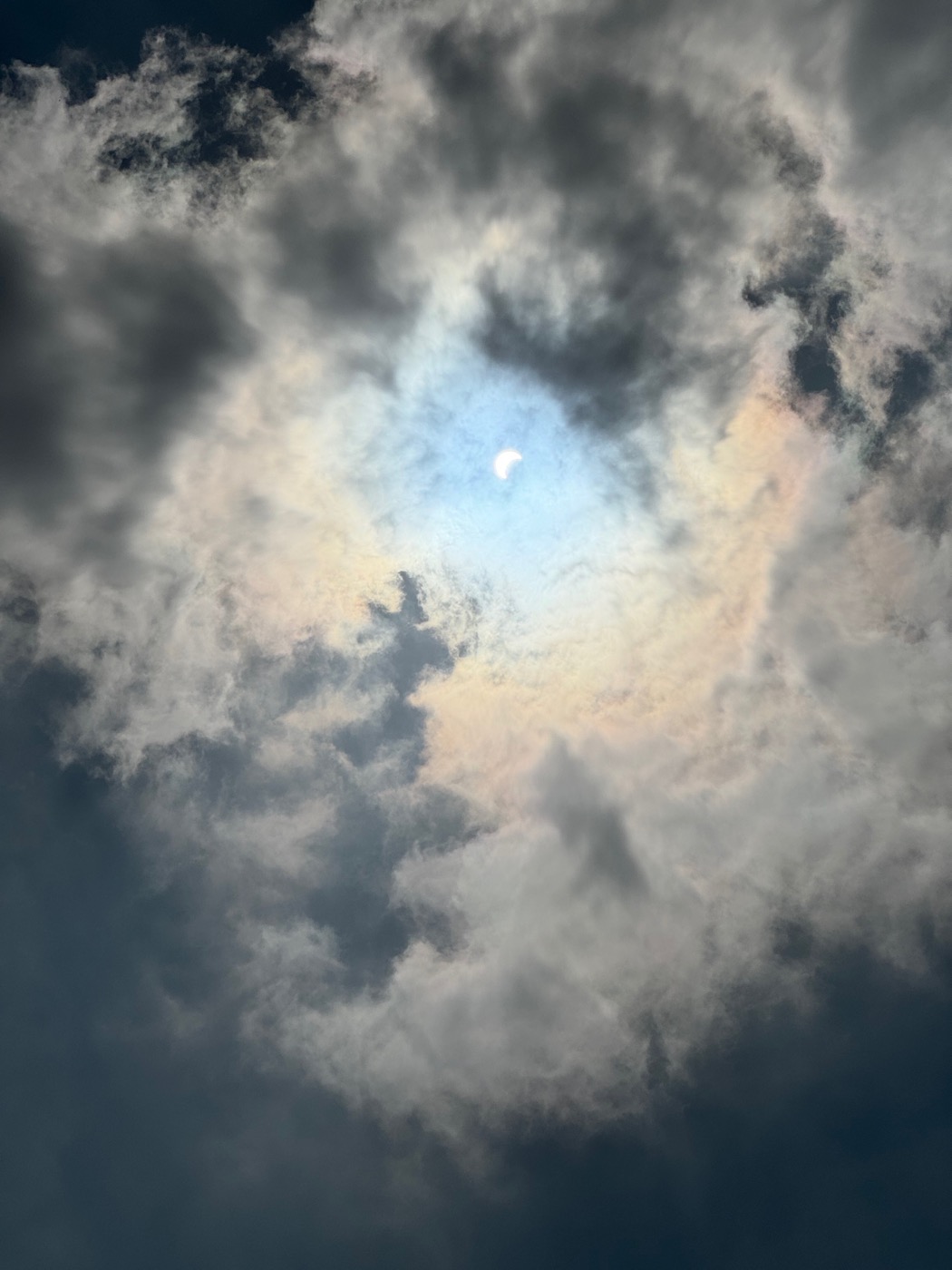
The occasional clouds we got actually led to some pretty neat pictures.
You can hold up a material with a small hole in it and see light shining through it make a crescent shape. We didn’t have any such materials handy, but I managed to get a similar effect by holding my watch strap—filled with holes—up at an angle that made those holes smaller.
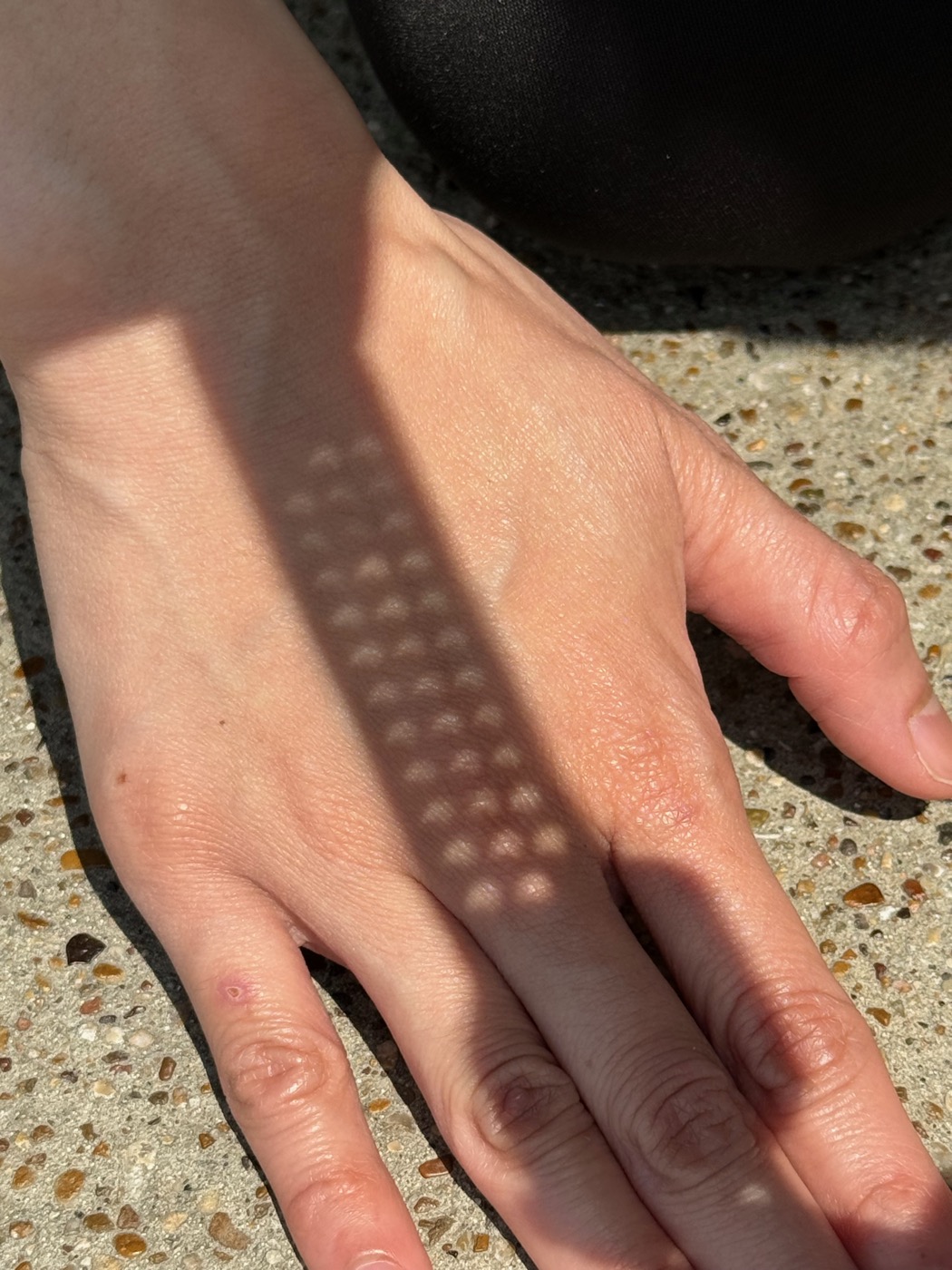
I’m cheating with the chronology a bit: this was actually taken after totality, but it’s the same effect either way.
Despite the risk of damaging my phone’s image sensor, I even took a few pictures of the sun without an eclipse filter, where I managed to catch some pictures of the sun with a crescent-shaped lens flare.
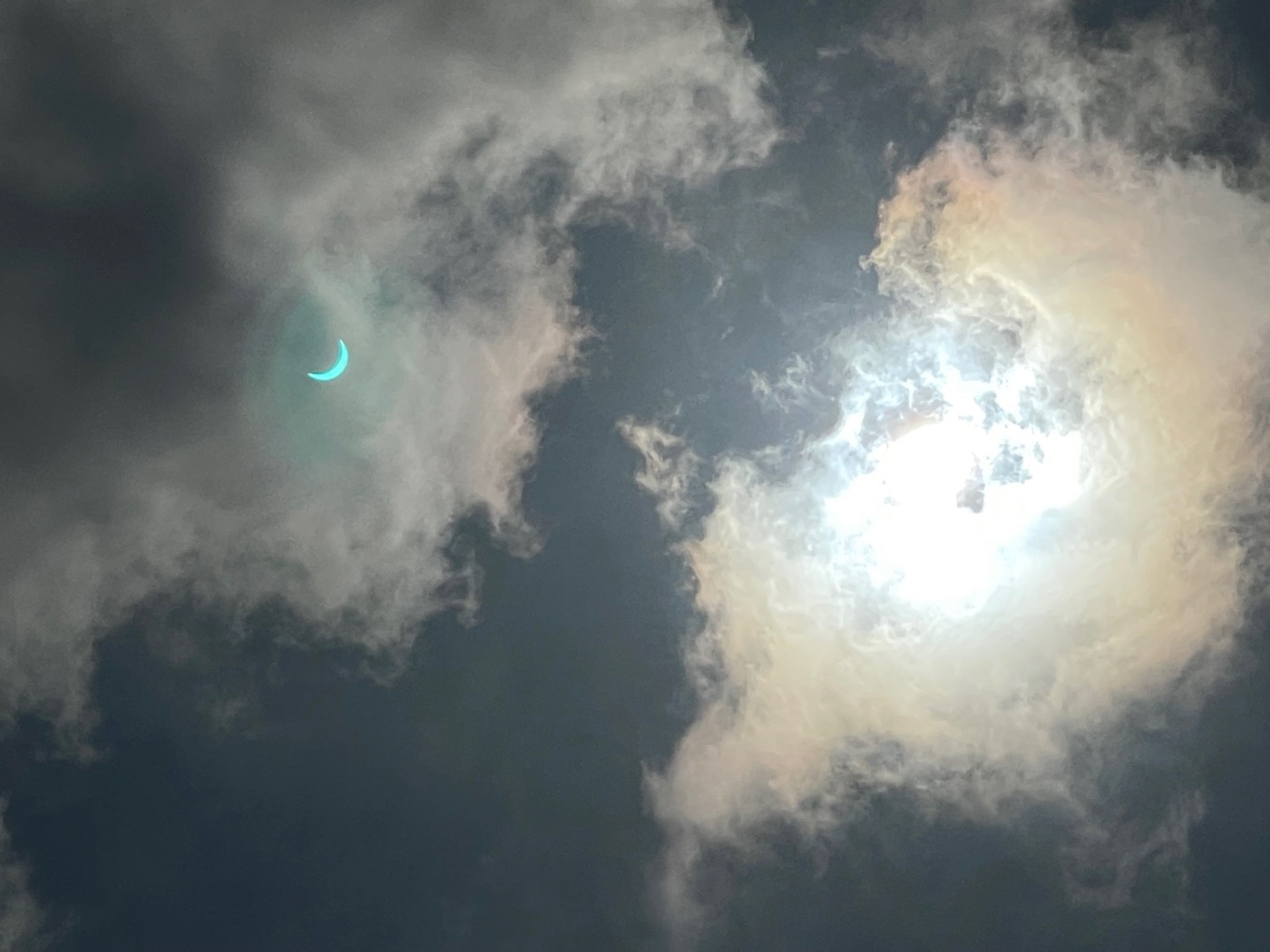
This one actually was taken before totality. The lens flare is reflected compared to the sun.
But none of that is very interesting compared to what happens next.
Pre-totality
As the sun shrank to a tiny sliver and we were almost at totality, the world started becoming strange.
A cool wind started picking up. It went from a hot spring Texas day, with the sun’s rays beating down on us, to… something else.
I noticed strange, rippling shadows across the floor of the parking lot. I had no idea why they were happening.
In the moment, I thought they might be clouds. I later found out I was wrong: these are called shadow bands, and are caused when the slight sliver of collimated light still shining from the sun refracts through ripples in the atmosphere. There is no place on earth you can ever see this, except for the minute or so before a total solar eclipse.
And it continued getting darker, yes, but in a way that felt profoundly unnatural.
An aside on lighting
Any time it gets darker, anywhere on Earth, light also changes colour. You go from the bright white light of noon, which is heavy in bluish tones, to the warmer yellows and reds of the sunset.
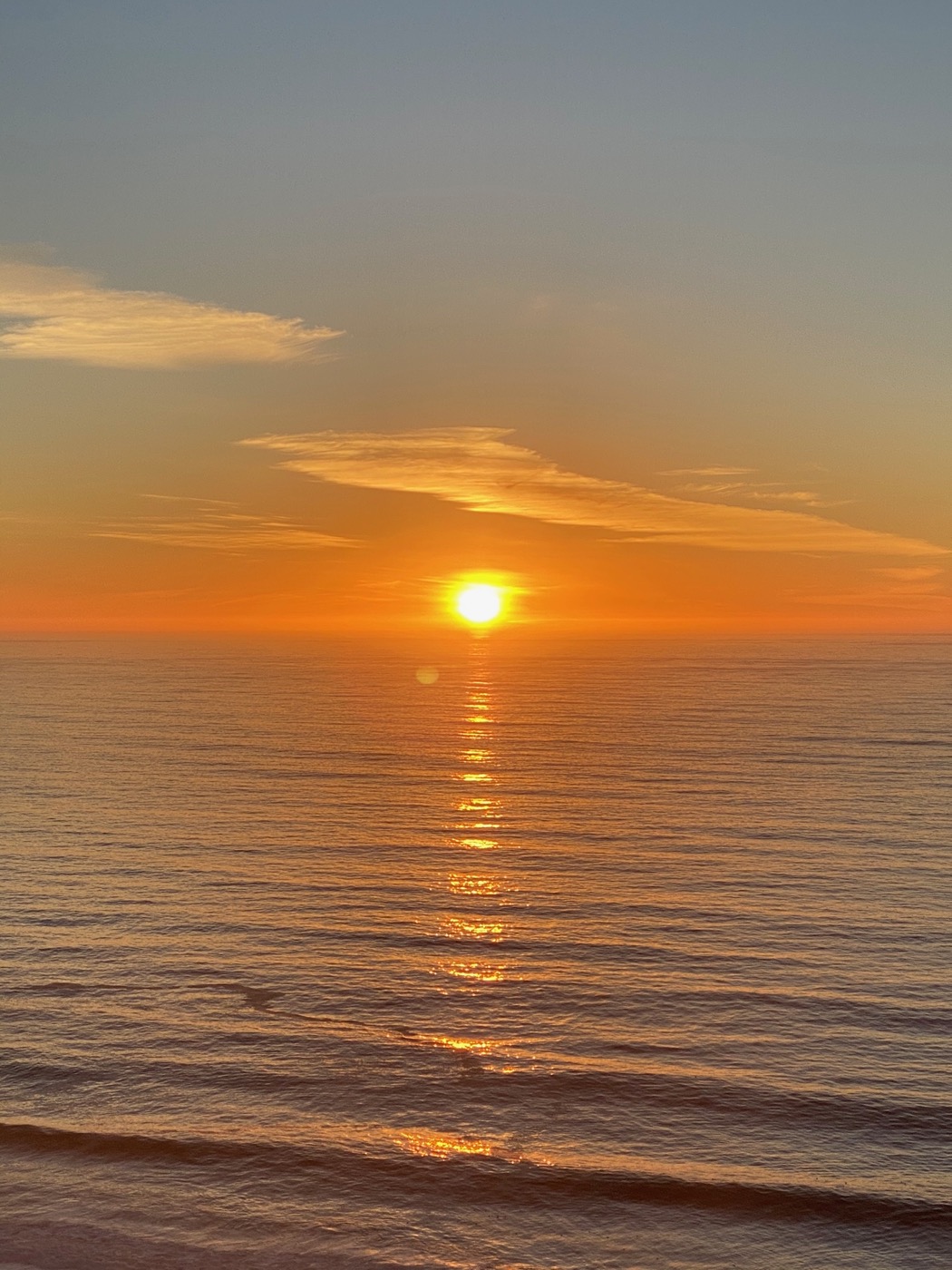
This association—between dim twilight and warmer light—is so ingrained in us as to be literally biological. Bluer light prevents you from sleeping, because you’re not supposed to be sleeping at noon. Many studies have shown this association and most devices these days provide a “night mode” that turns your screen yellow after sunset to prevent them from keeping you awake.
Eclipse light, just before totality, breaks that association. It isn’t warm. It’s gray.
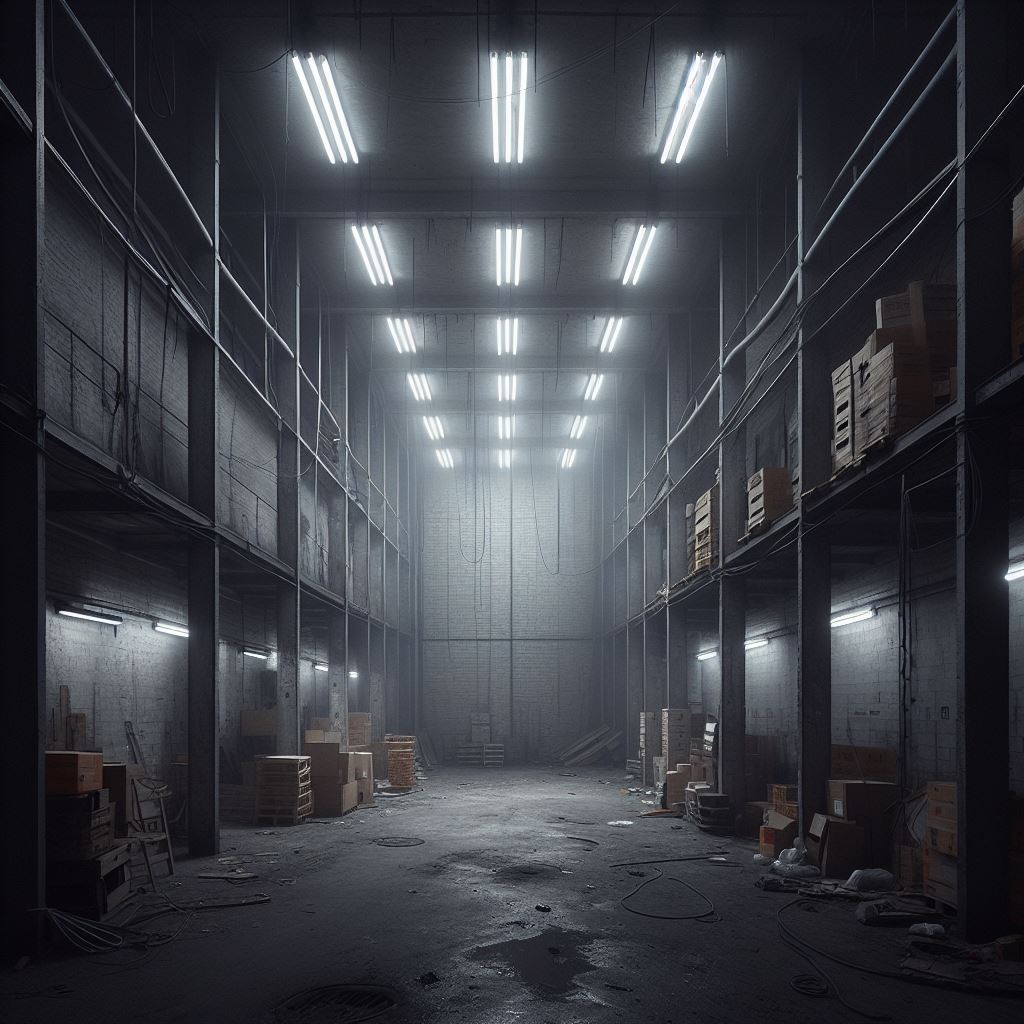
Generated with AI for illustrative purposes.
Picture a warehouse or other indoor space lit cheaply by dim fluorescent tubes. Not the nice kind that are a warm yellow colour, but the ones that are a harsh white, though still dim.
That’s what near-total eclipse light looks like. Except you’re not indoors: you’re outdoors, and the whole world is lit by this dim white light. Colour is being subtly leached out of the environment. The sky is becoming a less brilliant blue.
The effect feels like the world itself is dying.
Totality
The graying of your surroundings happens slowly at first, but then it accelerates.
We were suddenly plunged into night. The chill grew deeper. I could no longer see the sun through my eclipse glasses, so I took them off and realized that the sun no longer hurt to look at.
But the sun was wrong. Instead of the bright warm life-giver it usually is, I saw a black disk surrounded by a dim, sharp, white halo.
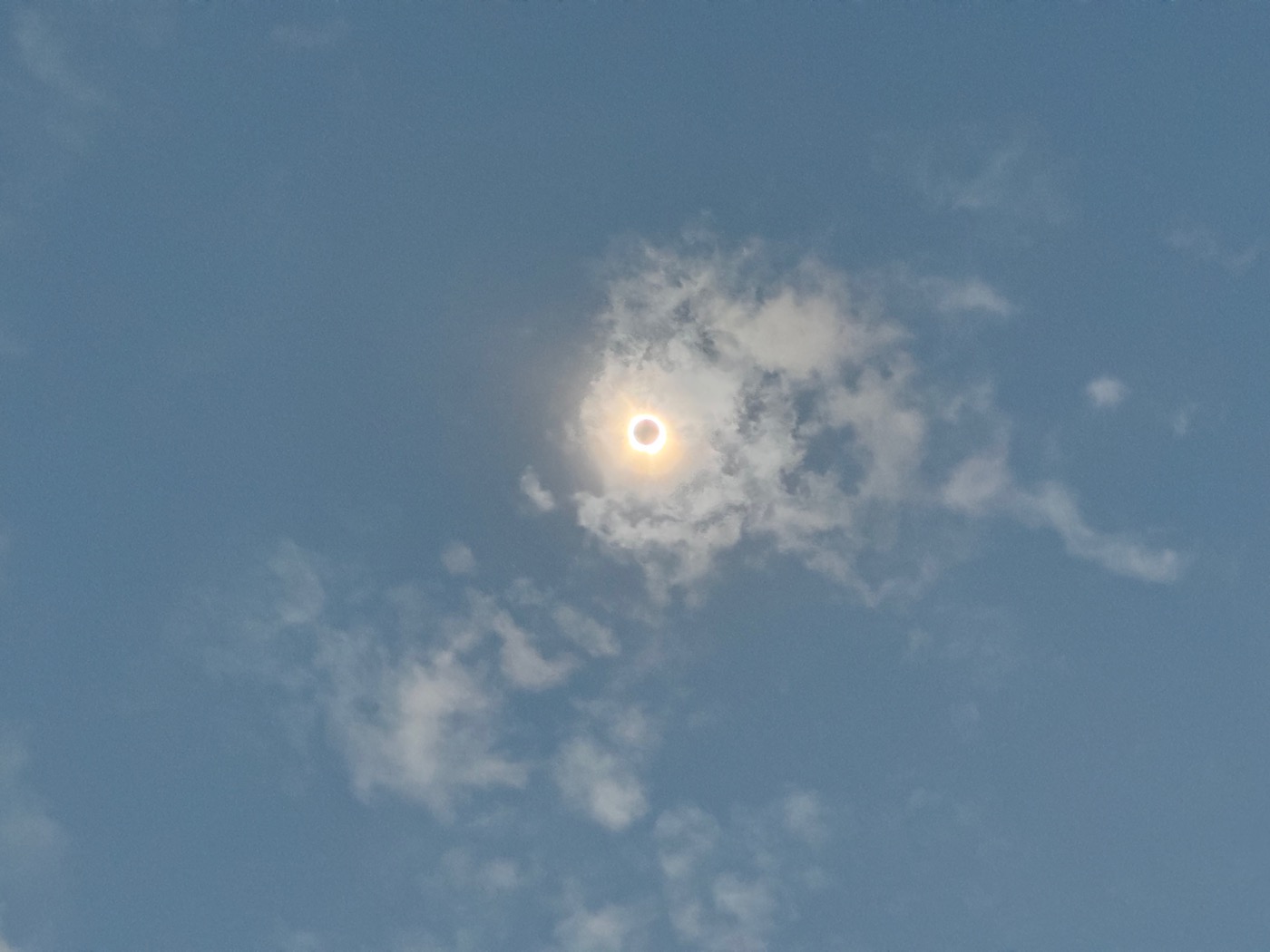
The capstone of that moment for us was when the automatic streetlights in the parking lot all switched on at once. Even the machines were confused.
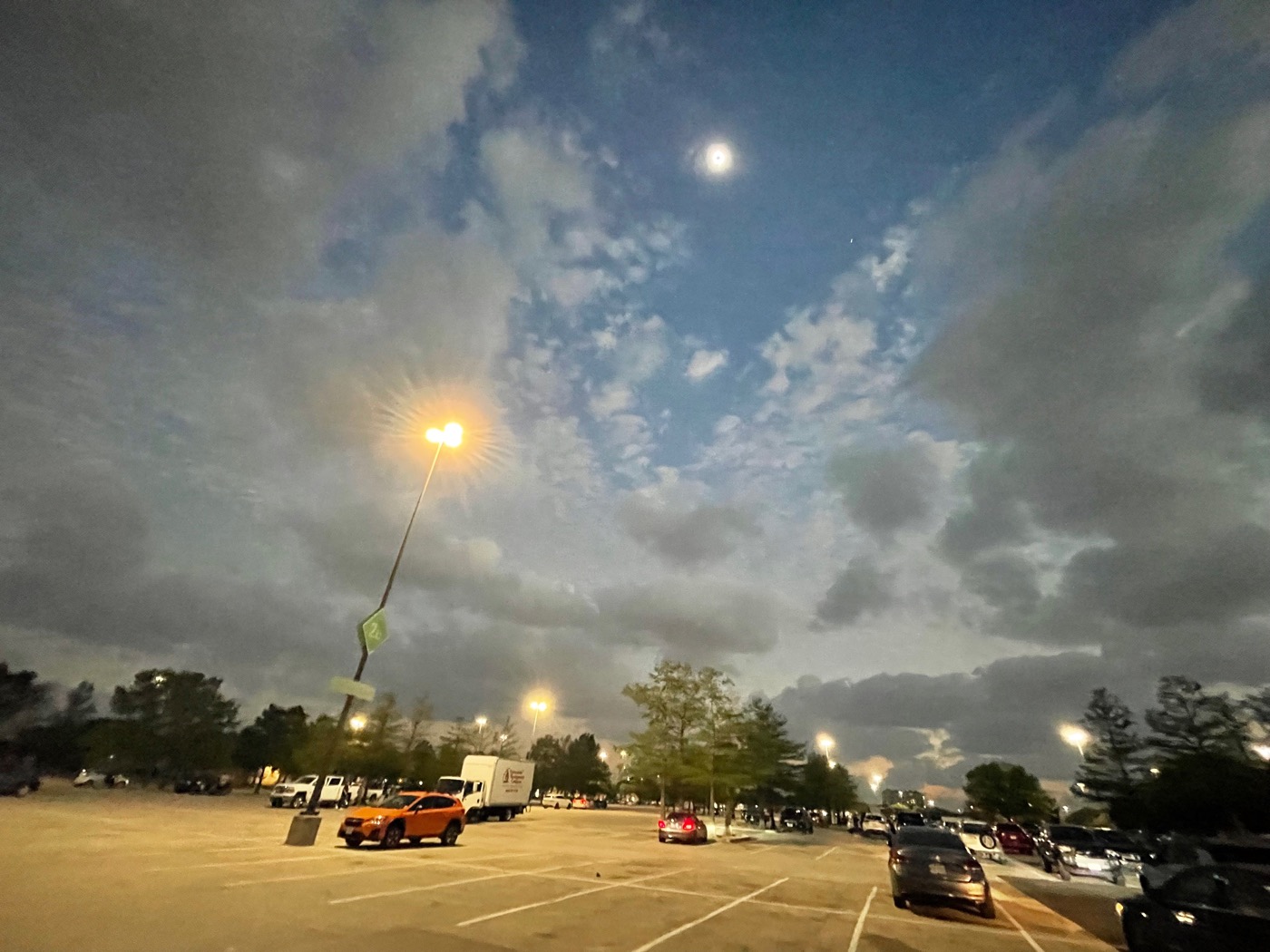
In that moment, those streetlights were brighter than the sun.
It’s hard to take pictures of this
I tried to capture this well on camera. I failed. The pictures don’t communicate what it’s like.
This is partially because we didn’t have good equipment. We were just relying on the stock camera apps on our phones. Cameras like these have features which are helpful in normal circumstances but fail in unusual circumstances like this:
-
Automatic exposure is your enemy. The darker it gets, the more your phone will increase exposure to compensate.
-
Automatic white balance erases the effect of that dull gray light. Your phone naturally compensates for the colour of lighting, so that images under warm indoor lighting look similar-ish to images in midday light, but that means the effect of eclipse lighting is lost.1
The net result: your phone basically pretends it isn’t happening. It corrects for it and washes all of these anomalies out.
But I suspect that even if I’d had an amazing camera and calibrated it perfectly, it still wouldn’t have captured the experience of seeing it live. Everything around you is being affected. You don’t have anything familiar to latch onto as the world goes insane.
Returning to normality
Just as quickly as it started, it was over. If you were determined enough to race to the center of the path of totality, you might have gotten between four and five minutes. We got less than one and a half.
The black disk moved an imperceptible amount, and suddenly the sun hurt to look at again. I put on my eclipse glasses and looked, and all I saw was a tiny pinprick of light. Just that tiny pinprick was enough to bring life back to my surroundings.
The streetlights went out again. Colour started gradually returning.
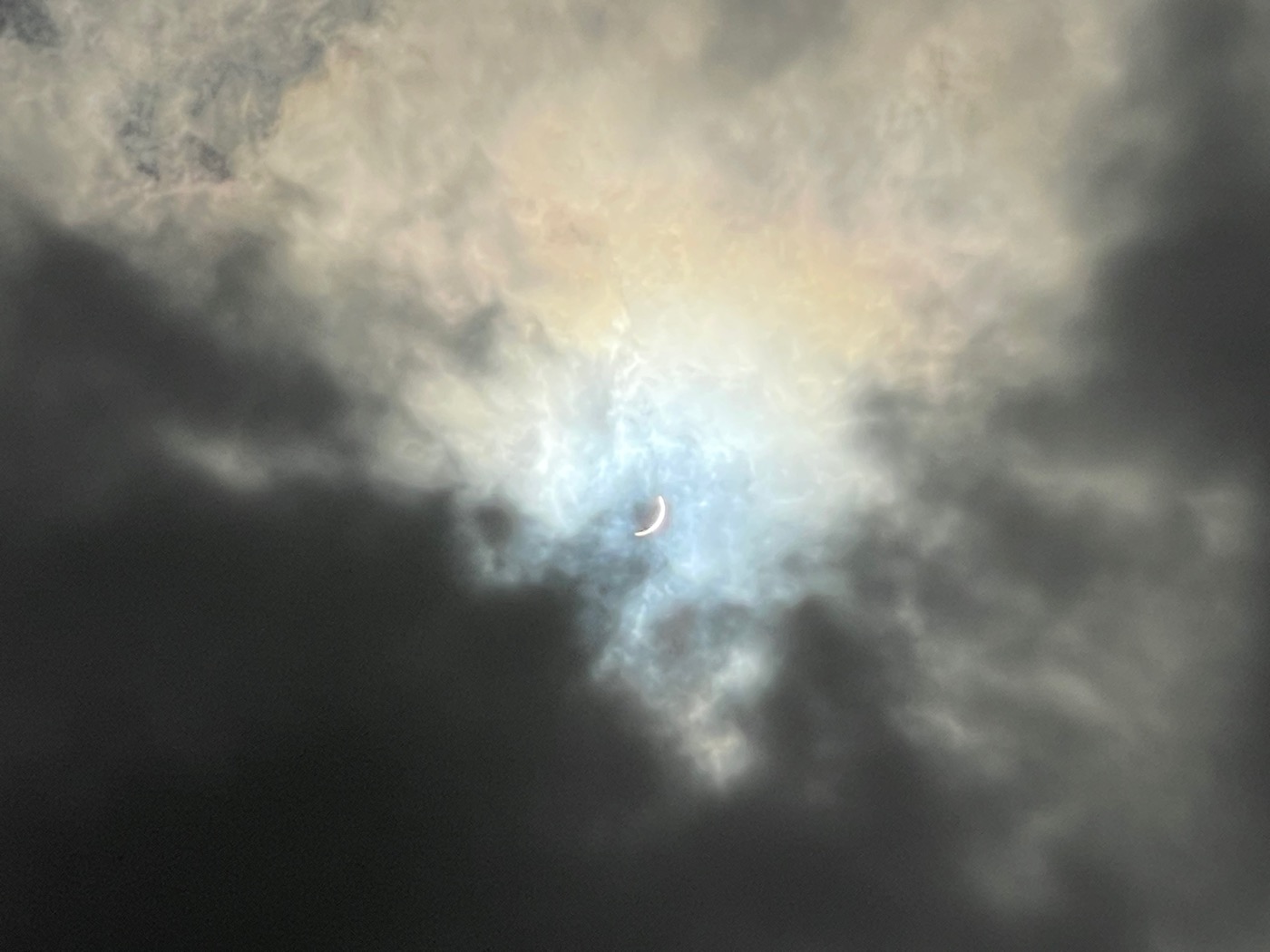
We spent less than ten minutes in that parking lot after full totality.
This was partly practical: one of our crew had an early flight back and we wanted to beat the traffic.
But it was also because we no longer cared about partiality. We took peeks at the waxing sun through our eclipse glasses on our way back, but it was so underwhelming compared to what we’d just seen that we weren’t keen on dwelling there.
Horror is the dissolution of our world’s boundaries
I came away from this understanding why ancient cultures saw eclipses as harbingers of some sort of apocalypse, before they learned to predict them.
Total solar eclipses aren’t just neat diversions. They’re cosmic horror.
Youtuber Super Eyepatch Wolf gave a great and succinct definition of horror in a recent video:
The best definition I have ever heard for horror is that horror is the dissolution of our world’s boundaries.
What this means, is that in order to exist in our world, and feel like it has some semblance of safety and order, there’s certain rules we have to accept as reality: that we are safe within our homes, that our loved ones would never hurt us, that the dead cannot come back to life, or that we are the dominant species within the universe.
It’s those boundaries that make the world make sense. And horror happens when those boundaries dissolve.
Among those boundaries? That the light of the sun will be there for you to see and warm yourself by at noon on a clear Texas day.
It’s easy to forget that we live on a planet. That we live on a ball of rock hurtling through space. That we’re a tiny growth of life clinging to its surface. That everything that happens on our planet, all the warmth and life and activity, is contingent on us having the perfect distance from an uncaring ball of fire so massive and so brilliant that even just a pinprick of its radiance is enough to blind you.
Our life, our world, and everything on it, is contingent on this extremely specific balance.
You know all of this, of course. But you only know it intellectually.
The eclipse takes that balance away from you, just for a moment. By forcing you to contend with the naked universe ever so briefly, it doesn’t just remind you of this contingency. It makes you feel it.
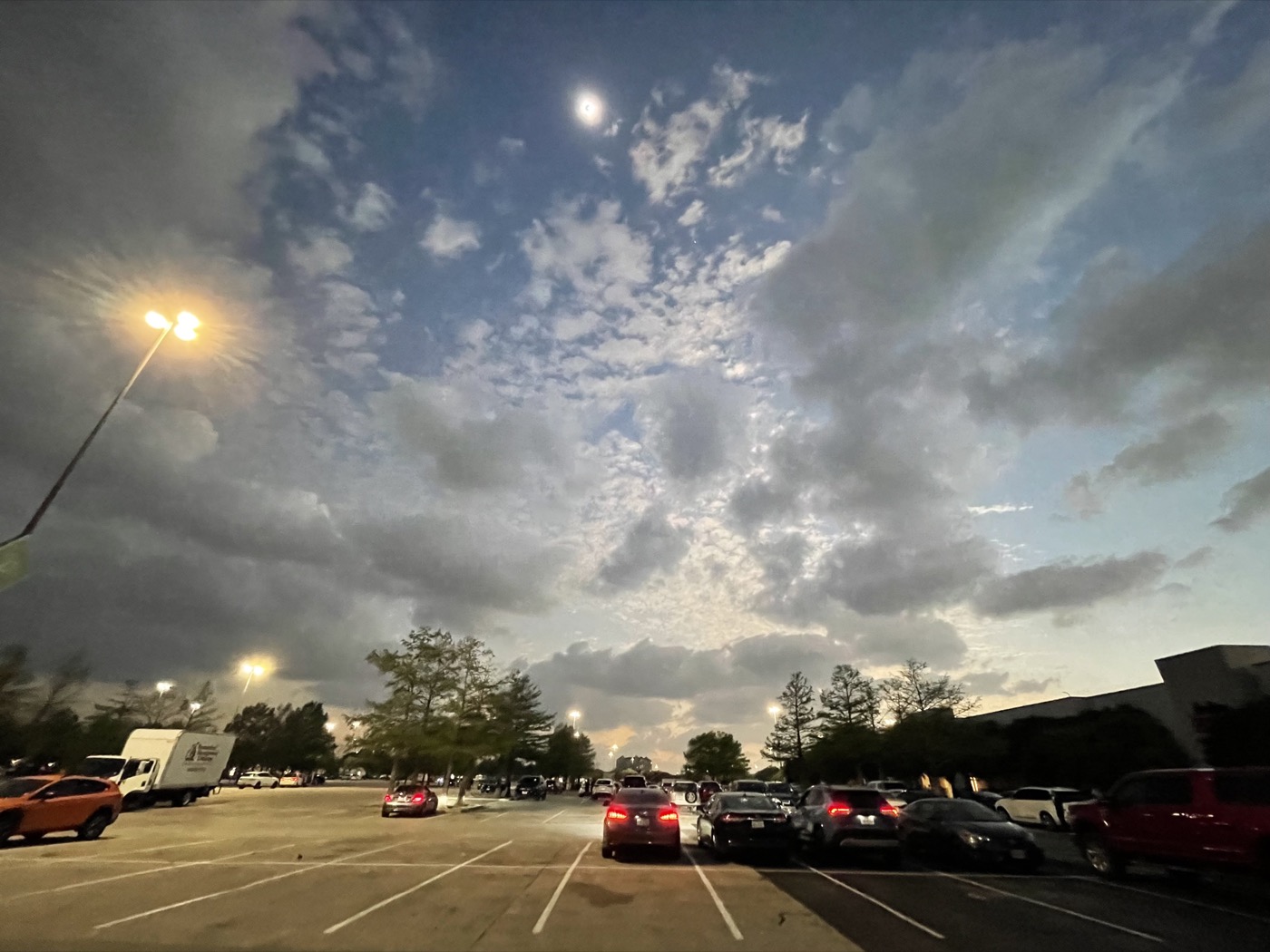
I get it now
Even the five of us in that parking lot didn’t understand this before we saw it. It’s one of those things, like immersion in a foreign culture, that’s hard to grasp the scale and subtleties of unless you experience it for yourself.
Our group of eclipse-chasers was actually much bigger than just those five. But two-thirds of our group—many of which had actually seen total solar eclipses before, and to whom I’m indebted for organizing the trip—were concerned about the forecast of clouds and inclement weather around the Dallas area. They chose to drive four hours, all the way into Arkansas, for the chance at a better view.
We, the lazy ones, thought they were kind of crazy to do that. But after experiencing that? I get it. We were very lucky that the weather and cloud cover in the Dallas area turned out to be okay.
The sad part is that this is the last eclipse it’s practical for most people in North America to see for a long while. The next one is over twenty years away, in 2045. To catch one sooner you’ll have to fly to somewhere like Spain, Australia, or Tunisia.
Still, if you can make it to any of these, you should. Our lives are just barely made possible by a series of careful balances this world currently strikes. We’re vulnerable to anything that upsets them, and eclipses are a reminder of this.
Maybe I’ll be able to bring my as-yet-unborn children to the next North American eclipse after they’ve hit adulthood, should we be so fortunate. I can only hope those balances are preserved long enough for that to happen.
-
This is closely related to the issue I had when capturing images of the smoke-filled SF Bay Area skies in 2020. My phone kept “correcting” for the orange lighting, to the point where I had to edit the image afterwards to undo it. ↩︎